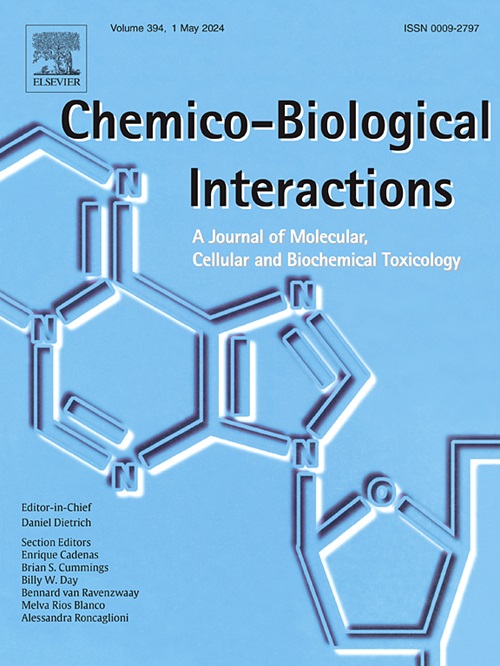Impact of novel aldose reductase inhibitor drug on gut microbiota composition and metabolic health in ZDF 'lean' rats
IF 4.7
2区 医学
Q1 BIOCHEMISTRY & MOLECULAR BIOLOGY
引用次数: 0
Abstract
A novel multi-target drug, cemtirestat, inhibiting aldose reductase (ALR2) has been developed to prevent secondary diabetic complications and act as an antioxidant against hyperglycemia-related processes. This study examines cemtirestat's impact on gut microbiome composition, drug metabolism, and therapeutic efficacy in male Zucker diabetic fatty (ZDF) "Lean" rats. Rats were divided into the control group (C) and the treated group (T), which received 7.7 mg/kg/day cemtirestat for two months, with weekly monitoring of food, fluid intake, and weight gain. Stool, urine, and plasma samples were analyzed biochemically, and fecal DNA was sequenced using Oxford Nanopore Technology. Treated rats exhibited less weight gain, likely due to cemtirestat's antioxidant effects. Biochemical analyses revealed no significant changes in glucose, liver enzymes, or cholesterol. Although there was a slight increase in alanine aminotransferase (ALT), our study found that levels of other liver enzymes such as aspartate aminotransferase (AST), alkaline phosphatase (ALP) and total bilirubin remained within normal limits, suggesting the observed increase in ALT was not indicative of drug-induced liver injury. LefSe microbiome analysis revealed an enrichment of beneficial bacteria like Blautia and Faecalibacterium in treated rats. Microbial community structure did not distinctly separate treated from control groups, but differences emerged over time. DeSeq2 analysis identified varying genera abundances over weeks, with treated samples enriched in beneficial bacteria by Week 8. Correlation analysis linked plasma insulin levels positively with Prevotella and negatively with Clostridium and Lactobacillus. Cemtirestat's impact on weight and microbiota suggests the potential to improve gut health. Further research is required to uncover cemtirestat's mechanism in diabetes management, drug metabolism, and therapeutic efficacy.

新型醛糖还原酶抑制剂药物对ZDF“瘦”大鼠肠道菌群组成和代谢健康的影响
一种抑制醛糖还原酶(ALR2)的新型多靶点药物cemtirestat已被开发出来,用于预防继发性糖尿病并发症,并作为一种抗氧化剂对抗高血糖相关过程。本研究探讨了cemtirestat对肠道微生物组组成的影响及其对雄性扎克糖尿病脂肪鼠(ZDF)"瘦 "大鼠药物代谢和疗效的影响。将大鼠分为对照组(C)和治疗组(T),对照组每天接受 7.7 毫克/千克 cemtirestat,为期两个月,治疗组每周监测食物、液体摄入量和体重增加情况。对粪便、尿液和血浆样本进行生化分析,并使用牛津纳米孔技术对粪便 DNA 进行测序。经处理的大鼠体重增加较少,这可能是由于cemtirestat的抗氧化作用。生化分析表明,葡萄糖、肝酶或胆固醇没有明显变化。虽然丙氨酸氨基转移酶(ALT)略有升高,但我们的研究发现,天门冬氨酸氨基转移酶(AST)、碱性磷酸酶(ALP)和总胆红素等其他肝酶的水平仍在正常范围内,这表明观察到的 ALT 升高并不表明药物诱导的肝损伤。粪便微生物组分析表明,治疗后的大鼠体内富含有益细菌,如 Blautia 和 Faecalibacterium。微生物群落结构并未将治疗组与对照组明显区分开来,但随着时间的推移出现了差异。DeSeq2 分析确定了不同菌属在几周内的丰度变化,在第 8 周时,处理过的样本中有益菌增多。相关分析显示,血浆胰岛素水平与普雷沃茨菌呈正相关,而与梭状芽孢杆菌和乳酸杆菌呈负相关。Cemtirestat对体重和微生物群的影响表明它具有改善肠道健康的潜力。要揭示 Cemtirestat 在糖尿病管理、药物代谢和疗效方面的作用机制,还需要进一步的研究。
本文章由计算机程序翻译,如有差异,请以英文原文为准。
求助全文
约1分钟内获得全文
求助全文
来源期刊
CiteScore
7.70
自引率
3.90%
发文量
410
审稿时长
36 days
期刊介绍:
Chemico-Biological Interactions publishes research reports and review articles that examine the molecular, cellular, and/or biochemical basis of toxicologically relevant outcomes. Special emphasis is placed on toxicological mechanisms associated with interactions between chemicals and biological systems. Outcomes may include all traditional endpoints caused by synthetic or naturally occurring chemicals, both in vivo and in vitro. Endpoints of interest include, but are not limited to carcinogenesis, mutagenesis, respiratory toxicology, neurotoxicology, reproductive and developmental toxicology, and immunotoxicology.

 求助内容:
求助内容: 应助结果提醒方式:
应助结果提醒方式:


